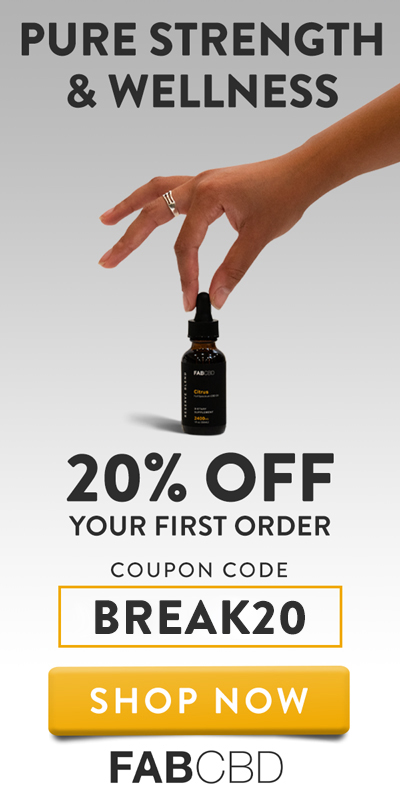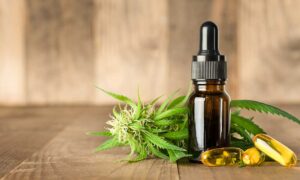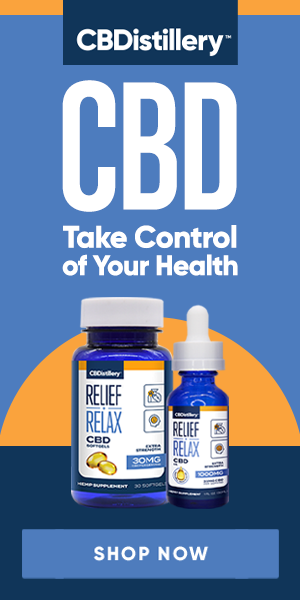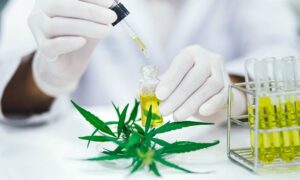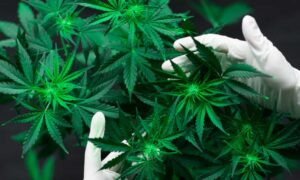When it comes to choosing the finest CBD products, lab reports are essential for determining the product’s quality. Aside from giving openness, lab results enable us to determine whether a certain product is devoid of chemicals, poisons, and other potentially dangerous or synthetic ingredients.
Reading CBD oil third-party lab reports is the only method to determine what’s in your cannabidiol-infused product. As you begin to investigate the plethora of CBD products on the market, you’ll discover that some producers give third-party lab results, which are critical to know if you’re purchasing high-quality CBD oil.
What Is Certificate of Analysis (COA)?
A Certificate of Analysis (COA) is a vital document that is included with a variety of produced items such as food, chemicals, research products, and pharmaceutical products. The majority of biologics are manufactured in batches/lots. As a result, it is critical that each batch release passes a quality check. These quality checks verify that the biologic drug’s purity, safety, and potency are within the product specification range. The metrics (quality characteristics) utilized for such evaluation vary per manufacturer but follow a common framework.
Why Must You Learn About The Reports?
These are created by an independent firm, which increases their trustworthiness because the lab is completely responsible for the outcomes. As the CBD industry expands, there are no longer any content or quality standards on CBD products offered. Given the rapid growth of the cannabidiol sector, there are hundreds of new producers and products on the market every month without any quality control and standardization. and each day more and more misconceptions about CBD is growing and harming the industry as a whole.
Unfortunately, as a result of this, there are thousands of low-quality CBD products on the market, some of which contain dangerous synthetics. As a result, you must exercise extreme caution while purchasing CBD oil. You may expect to find additional cannabinoids in your cannabidiol-infused items in addition to the highly beneficial CBD. Furthermore, lab testing ensures that the sample is free of contaminants, pesticides, microorganisms, and heavy metals, guaranteeing that you are receiving the best product available. You should always check to see if everything is right.
How to find a CBD Lab Report?
Some CBD businesses post their lab findings online on their website. Other CBD businesses make their lab findings available on a third-party website. The lab report should be available via the QR code shown on the CBD product. Scan the QR code using your phone’s camera. After scanning, a website with the lab report should display. Look for the batch number stamped or printed on the packaging of your CBD product.
If the brand asks for the batch number, put it in the appropriate area, and the lab result should display. If the brand does not need you to provide the batch number, seek the lab report with the same batch number as your CBD product and click.
Examples of COA’s
Many CBD brands provide links or examples of what a COA on a CBD product should look like and what you have to pay attention to. There is a lot of information on the internet surrounding the right way of reading these lab reports, so you should always try to find a brand that has credibility.
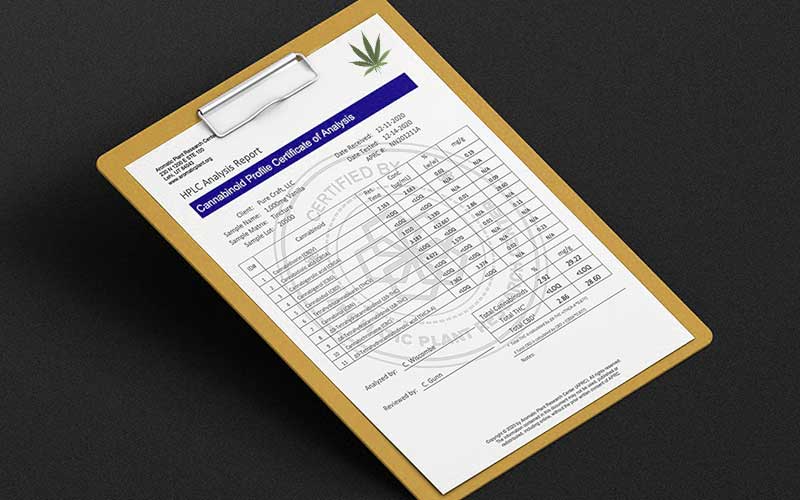
How to Read: Things to Look Out for?
Now that you understand why it is critical to purchase items with third-party lab reports let’s go through some of the essential compounds of a lab report to learn what to look for in such a document. Lab reports might be perplexing. They may also contain the findings of different contamination tests.
The quantity of information the laboratories are attempting to portray might be overwhelming with statistics, percentages, and graphs. The forms of lab reports vary; nevertheless, they should contain certain fundamental components, and you should be able to read them.
The product information is the most crucial item to search for. The identity of the product examined should be explicitly stated in all lab reports. Some abbreviations are very common, and that should be your starting point. Here are some common ones so that you can recognize them.
B/LOD: it stands for Below Limit of Detection. This implies that the drug or compound tested was present, but the level measured was less than the testing instrument’s detectable cut-off value.
B/LOQ: it stands for Below the Limit of Quantitation. This indicates that the drug or compound was found, but the value was lower than what could be correctly reported. If you look at the LOQ for a drug or molecule and find “B/LOQ,” it implies that the detected amount is less than that value.
Below threshold: This implies that the compound’s or substance’s result is less than the permissible, legally mandated number.
LOD: stands for Limit of Detection. This is the smallest number at which the testing device can detect the presence of a chemical or compound.
The term “limit of quantification” (or “LOQ“) refers to the upper limit of a quantity. In general, a result value must be larger than or equal to the LOQ number stated in each row of the test column for each substance tested for the laboratory to report it.
N/D: it stands for Not Detected. This is one of the most prevalent acronyms in a CBD lab report. A result of N/D indicates that the equipment detected no quantity of the tested chemical or compound.
There are more compounds you need to look out for and check on CBD products, such as:
Potency
One of the essential things to look for is a potency test to determine the exact quantity of cannabinoids in a certain product. Although CBD is the primary component of cannabidiol-infused products, it is not the only chemical that you can find in cannabis. As a result, lab testing is essential for determining the cannabinoid content and strength of the product. Many producers test their goods for CBD, CBDA, CBC, THC, THCA, and other active ingredients.
CBD Content
The CBD strength and content are two essential things to check for in a CBD oil third-party lab report. This is generally a milligram per gram or as a percentage. The more CBD there is in the oil, the stronger it is. In other words, one drop of a stronger CBD oil contains more cannabidiol than an equal-sized dose of a weaker CBD product.
Is higher concentration CBD oil better? Yes, certain patients may require more cannabinoids due to their body weight and different immune systems. As a result, it is suggested to utilize a more powerful CBD oil for treating certain illnesses with high amounts of cannabidiol.
Other Cannabinoids
As with other cannabinoids, the product may include a variety of active chemicals. We may now categorize CBD-infused goods into three categories:
- A full-spectrum product: containing a diverse range of cannabinoids, including THC. These treats include a combination of cannabinoids and terpenes.
- Product with a broad spectrum: having a similar number of cannabinoids as full-spectrum but no THC.
- A CBD isolate-based product: contains no additional components like terpenes or cannabinoids. These items are pure CBD or 100 percent CBD.
You can find more about full spectrum, broad spectrum and isolate CBD here.
Terpenes
Terpenes are the chemicals that give the finished product distinct tastes and colors. Furthermore, they have a variety of positive benefits. Manufacturers test the products for terpenes to ensure that they have the desired consistency. These aromatic oils present in cannabis are often quantified in parts per million and are included in full-spectrum CBD extracts (PPM).
Terpenes such as linalool and myrcene have sedative effects, which is why some cannabis strains are more relaxing than others — CBD oil is no exception. In terms of other terpenes, pinene, for example, has been shown to improve memory.
Please take note that not all facilities test for terpene profiles, but it doesn’t imply the product doesn’t contain these chemicals. As a result, if you want to learn more about the product, try contacting the producer directly to learn more about terpenes and other components.
Microbes
There are many types of microbial creatures out there; some are beneficial, while others are harmful. In general, microorganisms should be avoided in cannabidiol-infused goods.
As a result, if any living creatures appear in the third-party lab report, it is recommended to switch providers. To be more specific, the tests confirm the presence of microorganisms such as molds, yeast, salmonella, and E. coli. The sheet should state “nothing detected.”
Pesticides
Obviously, it is critical to determine whether the product includes potentially hazardous pesticides, fertilizers, growth hormones, or herbicides. If any of these chemicals exist in the lab report, the product should be labeled “fail” immediately. However, if the report shows that your CBD oil is free from pesticides, you can be confident that it is derived from pesticide-free hemp. Always get CBD oil that is completely free of possibly hazardous substances.
Heavy Metals
CBD products often go through tests for heavy metals by heavy metals labs. Arsenic has an acceptable limit of 1.5 ppm cadmium, 25 ppm mercury, 15 ppm lead, and 5 ppm per unit volume. These elements are hazardous to human health. Therefore, it’s important to know whether they exist in your testing sample.
Chemical Solvents
Top-tier goods should be completely solvent-free, so check for a comprehensive analysis of residual solvents anytime you read a CBD oil test. These can extract CBD from the plant and convert it into the oil. Keep in mind that excessive levels of chemical solvents might cause significant health problems.
Always ensure that the lab report verifies that there are no glycols in the product, particularly propylene glycol (PG) or polyethylene glycol (PEG) (PEG). These solvents can degrade into cancer-causing acetaldehyde and formaldehyde; therefore, avoid using them.
Reputed third party testing
An unbiased, independent laboratory must analyze the plant content and quality of a grower’s hemp product. This is critical from the standpoint of the consumer. Today’s market is a non-regulated state of commerce, and because of the FDA’s lack of monitoring, producers and distributors may simply attach medical-looking labels onto attractive bottles and then offer them as a cure-all.
Oil deteriorates and loses efficacy with time. Hemp oil should go through many tests regularly, not just for contaminants but also to ensure effectiveness. Proper testing and reporting demonstrate the company’s commitment to openness in its operations.
Final thoughts
It is unsurprising that in the early days of Cannabinoid research, there is a new frontier of CBD products available to the customer. In fact, according to a 2017 JAMA research, over 70% of CBD products missed the mistakes on the label in some way, whether it was because they included too much or too little real CBD. That is beginning to change as CBD products become more widely available, people become more educated, and state and federal laws are put in place. In fact, many items go above and above by putting a QR code on their label, which a buyer may scan to link directly to the product’s COA.
Regulation prevents medications with significant, perhaps fatal adverse effects of the market, keeping harmful items off the market. Regulations also demand that the seller give you, the customer, true and correct information about their product, particularly regarding chemicals that you put into your body or on your skin. These COAs also represent the firm’s dedication to openness and truth in labeling their product and the company’s concern for the consumer, which drives the corporation to make the product as pure as possible.
Overall, interpreting CBD oil third-party lab results is very easy, as long as you have a thorough grasp of the components to look for in a high-quality product. You should be able to conduct your own research that will help you understand the product better. In the end, it is you taking them, and your health matters.


